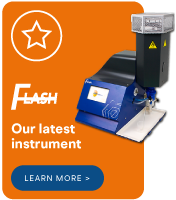Flame Photometer Use in Biology and Medicine
- The BWB Team
- Nov 22, 2018
- 2 min read
Updated: Mar 7, 2022

Flame Photometry isn’t only used for Chemists.
But how is Flame Photometry used in Biology and Medicine?
Flame Photometers are typically thought of for analysis of water samples to determine their ionic content, however a large proportion of flame photometers in today’s market are used to analyse biological samples.
For Biologists this may include plant samples, where a measured difference of ion content between the same species could be measured in different locations. It could also be used to track ion content in animals to detect how the environmental factors play into these readings.
For medical usage, the two main sample types are either blood (serum or plasma) or urine. Urine can track diet problems as well as track unexpected rises in urine salt levels which could be indicative of further complications. Blood and serum samples are very useful to be tracked as salt levels in the blood supports blood pressure.
Typical Sodium levels found in the blood is between 135 and 145mEq/L and is easily tracked with the use of a flame photometer. If this level falls below this it is known as the condition Hyponatremia and the opposite being high salt levels resulting in Hypernatremia.
Measuring Lithium and Potassium levels in blood samples is vitally important as these are the reason why our nervous system works, via forming a voltage deficiency across a cell membrane which enables contraction of muscles. Abnormally low or high concentrations of these vital metabolites can cause muscle spasms.
Photometry in itself is useful for these tasks as the speed at which samples can be taken and measured, especially when paired with an automatic fluid handling system (AFHS) for faster sample throughput. Being such a cheap yet effective alternative for sample analysis it has found its way into many different subject areas.
The ions that a flame photometer can measure are Sodium, Lithium, Potassium, Calcium and Barium. These ions are commonplace within biological systems as well as their availability for consumption in aquatic environments, which further emphasises the usefulness of a flame photometer.






